+442071933344
Free Video/Phone Call Consultation
Free Video/Phone Call Consultation
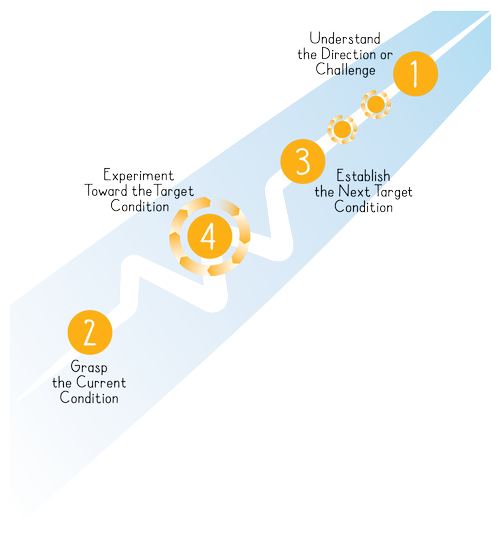
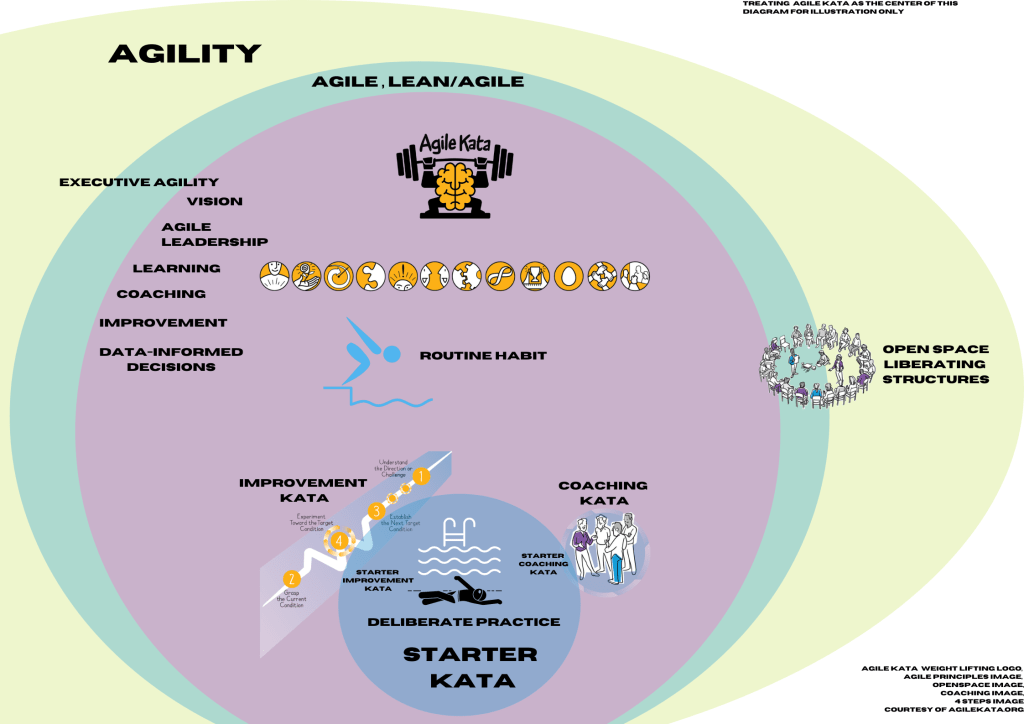
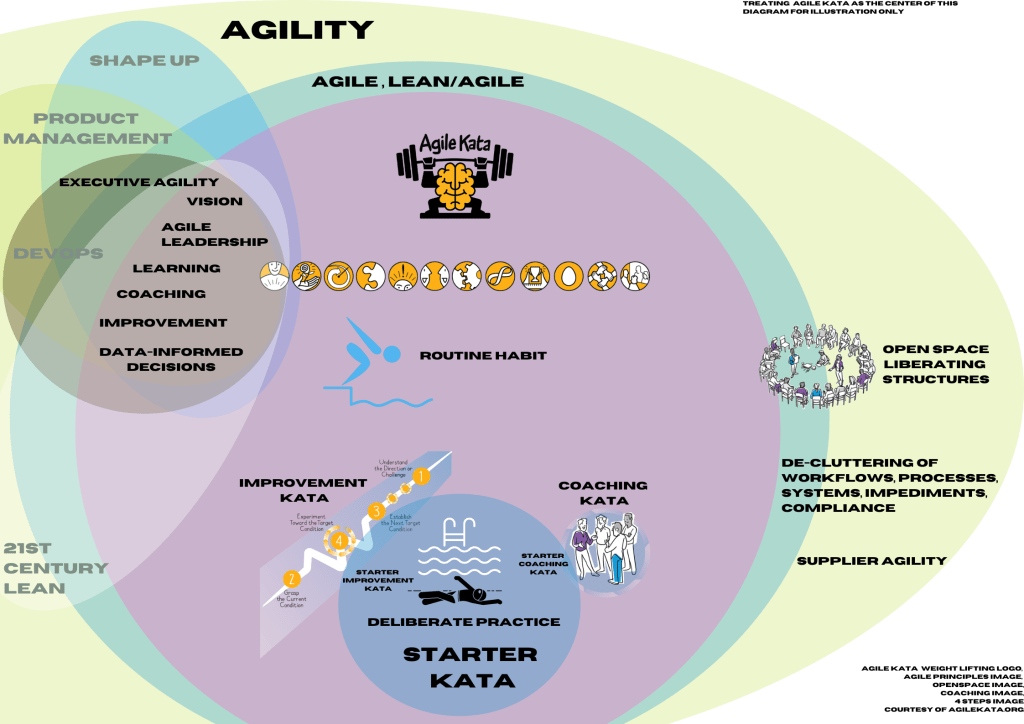
The Agile Kata is versatile and can provide answers to these common questions and challenges. It combines a proven practice, which has been applied for decades in lean manufacturing, with a clear alignment to agile values and principles.
See how scientific thinking and practical hands-on application work well together in 8 learning hours. Walk away with an understanding that the Agile Kata is not an off-the-shelf process product, but a pattern that helps you create your own process, specific to your organizational needs and goals.
The course also includes a free attempt at the Agile Kata Professional Level I (AKP I) certification exam.

Being an agile organization requires leaders, management, and agile team members to change the way that they organize their work, manage that work, and measure the results of their work.
Agile teams cannot do this on their own; they need help from the entire organization. Changes in the way that people think and work are required driving improved results by having everyone’s goals aligned.
In 8 learning hours, attendees develop a deep understanding of the role that Agile Kata can play in creating the conditions for a successful agile environment.
This workshop uses a combination of instruction and group-based exercises to help participants learn how to improving agility in a direction.
The case for Agile Kata
The “being doing gap”
You don’t need to be Agile to be agile, but Agile is mainstream. Other options include DevOps, Lean, Product Management, Modern Agile, and Shape Up.
Whatever the path, what’s needed is a behaviorset that demonstrates agility in action – perception, sense, results, and improvement in a direction.
Whatever kind of agility you pursue, agility is not a team sport (Klaus Leopold). Telling a flower to grow has little utility (Pia-Maria Thorén). Yet management over-fills the hopper with work, refuses to prioritize within capacity, all the while asking for more velocity without cultivating an environment where performance can improve. Even worse, the honoring of commitments is given more respect than doing the next right thing.
Agility cannot be bought in a box. Sustainable growth of authentic organization agility is often missing in action. Executive, senior, mid-senior management needs to truly empower teams or be proactive themselves to declutter workflows, processes, systems, and impediments.
But where to start from here?
If you look for travel directions when you get lost, some unhelpful locals might tell you “well, I wouldn’t start from here”. “Yes, thanks a million for that,” we might think:). Do we really have to “throw out the baby with the bathwater”?
Enter Agile Kata:).
The more things change the more they stay the same. The current track record of agile adoptions is not very promising. Most of all agile transformations fail to achieve their goals and therefore missing out on the huge positive impact it has on employee engagement, customer satisfaction, operational performance and time-to-market. Is it because companies see Agile as an organization process update and not as a cultural shift?
Is “agile” another buzzword or fad in your organization, which is difficult to break down into digestible pieces?
But where to start from here? Do we really have to “throw out the baby with the bathwater”?
Enter Agile Kata:).
Are your existing teams looking for new ways of triggering organizational change or looking for a new way of working? The list of challenges can be long.
The most popular options are beneficial, but they often get broken or just don’t feel right. We have to be careful; evidence-based data-informed thinking is needed to deal with complexity.
Teams become apathetic due to feelings of lack of agency and a lack of agile management behaviorset. Queues build up between teams.
So where to start from here? Do we really have to “throw out the baby with the bathwater”?
Enter Agile Kata:).
Be agile about becoming agile. For example, use “openspace” or liberating structures rather than boring meeting rooms.
Understand the long-term direction. Select a tangible challenge on the way to that long-term direction. Use the starter improvement kata with a daily starter coaching kata cycle. Rinse & repeat. Free yourself of the starter kata over time and find a better way to improve scientifically in a direction of agility. Use agile leadership, agility coaching, and the agile principles to guide that direction.
Use Agile Kata at any level to improve. Use Agile Kata when you’re stuck. Let Agile Kata help you to get free from the sticky mud. Try Agile Kata to rejuvenate and improves how it looks and how it feels.
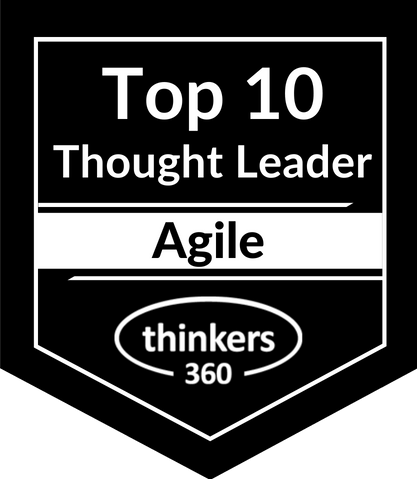
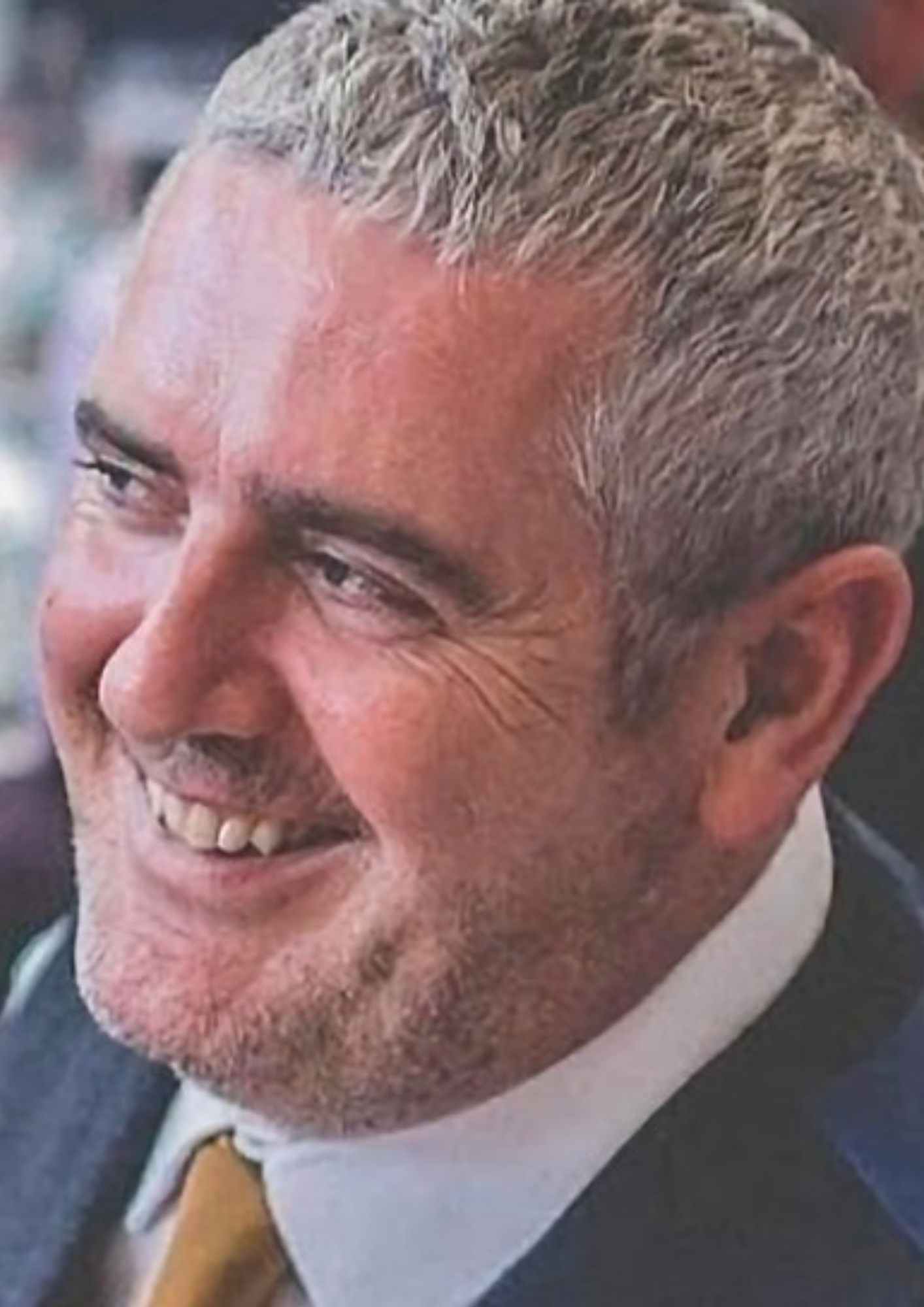
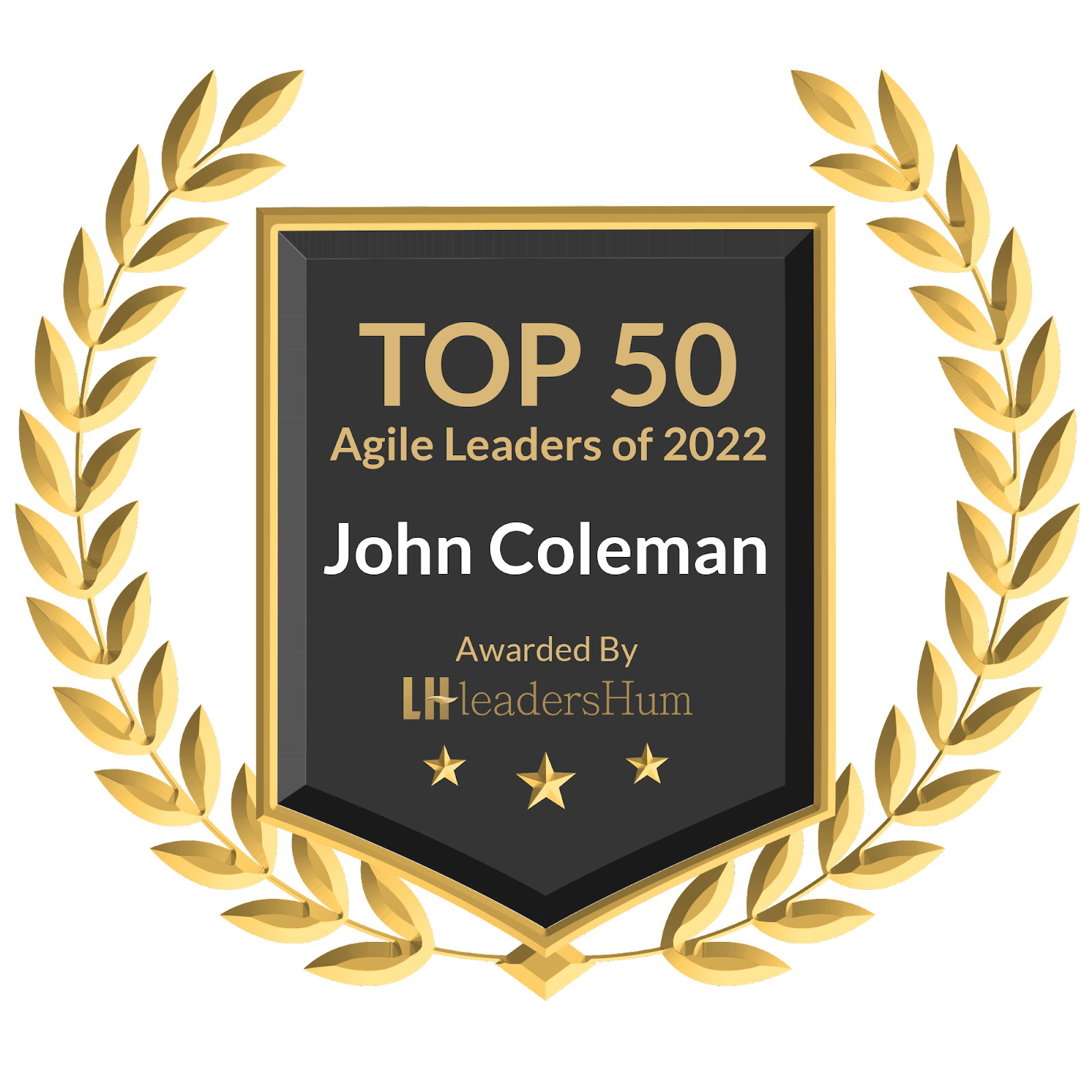
* When offered in-person, this course is generally delivered over one business day. When offered as a Live Virtual Class, the course may be broken up into more, shorter days, sometimes consecutive, sometimes one week apart.
Reviews & ratings are limited by nature. John needs to understand if the learning made a real difference back in the office. So, John likes to checks in 12-18 months later. He sees a pattern of improvement and regularly gets pleasant vibes from successful agility inspired by ideas from the training. For example, see this experience report.
John is grateful to be part of Marshall Goldsmith’s #payitforward campaign and, in so doing, offers free coaching/mentoring/co-training to a selection of potential agility chefs. Marshall Goldsmith taught John in Salt Lake City in February 2018. All of John’s workshops #payitforward Marshall Goldsmith content, including Marshall’s advice to John himself.
John’s client list (directly or indirectly) includes Japanese Tobacco International, TUI, Lilbit, digital2DNA, Shell, BP, Barclaycard, Vocalink Mastercard, Centrica, the Musgrave Group, RR Donnelley, DELL, Nordic Aviation Services, 84.51, Intralinks, PaySafe, Vodafone, Ericsson, NASA, and Sky.
Assessment preparation tends not to be covered in the workshop. The workshop focuses on attendees getting ready to apply new skills back at work immediately after the workshop. There is an expectation that attendees will attend some free post-workshop Zoom calls and watch recordings of their own group (or previous groups) doing tough practice tests, sometimes including John Coleman’s own practice tests which address the same learning outcomes, albeit from a different angle. John has an expectation that attendees will attend the calls, as assessment preparation does not scale on a 1:1 basis. Signing up for this workshop is effectively signing up to attend these calls.
Sometimes, John Coleman will have a trusted co-trainer to give a helping hand, someone who is already qualified or who is building up experience.
The Certified Agile Kata Practitioner course is designed for managers and those in leadership roles who are responsible for the introduction and establishment of Agile methods and techniques in an organization.
management at all levels, including executive & board level
agility coaches at all levels
leaders at all levels without leadership being a position
change agents at all levels
All participants completing the Certified Agile Kata Practitioner Level 1 course will receive a password to attempt the Certified Agile Kata Practitioner Level 1 assessment (which is not available for purchase witohut attending this training course). The AKP I certification requires a minimum passing score of 85%. AKP I class participants who attempt the AKP I I assessment within 14 days of receiving their free password and do not score at least 85% will be granted a second attempt at no additional cost.
“If I did return to Tesla, I would recommend Agile Kata” – Joe Justice (Agile@Tesla Transformation Lead)
“Agile Kata – More Agile than Agile!” – Chris Lennon (Spark Telecom)
“Agile Kata is very clear, very crisp, very practicable and very easy to share” – Joe Justice (Wikispeed and Scrum Author)
“What I have seen is that organizations declare they want to be agile, start a significant (and often expensive) transformation effort, and it typically fails to take hold and the only result is a new vocabulary for the same old processes. There is no substantive change in behavior. What is needed is a different mindset and behaviors. The Agile Kata approach of deliberate practice is truly the only way to get there. “ – Richard Sheridan (CEO of Menlo and Author of Joy Inc.)
Classes are usually small, and even if not, John Coleman uses techniques that make a large class run very well, to a limit. John Coleman does not train class sizes over his operational limit so attendees can rightly get the full benefit of his classes.
If you have specific requirements, e.g., you require a free place for an assistant, you require wheelchair accessible venue/room set-up etc., please let John Coleman know in advance via [email protected].
The delivery content is a combination of slides, flip charts, and exercises. The focus is more on flip charts and exercises. The approach is a combination of experiential training and Training From The Back of The Room, regardless of the training course, while sticking to the Scrum.org learning objectives.
Some topics could be completely outside the scope of the training class. To that end, some topics may need to be “parked”. Best efforts are made to address “parked” topics during the workshop and/or subsequent video conference calls.
The location is not 100% confirmed, it is an approximate location. The location cannot be finally booked until final numbers are known.
Let’s err on the side of caution to cover all eventualities. Please only book travel one week in advance and use low-commitment accommodation bookings that allow cancellation 24 hours in advance without charges. Most accommodation booking websites allow 24-hour cancellation in advance, please select that option. Please book travel at the last responsible moment (one week to go, confirming with John Coleman at [email protected]). For example, for flights, consider using low-cost booking services such as Skyscanner or Kayak.
Also:

John is an incredibly helpful instructor. I completed the Agile Leadership course with his assistance, and his explanations were always very clear and emphasized the big picture thinking of Agile. The work in the class was very dynamic, looking at scenarios and working in small groups or pairs to discuss our ideas. I also appreciated his real world examples from his extensive work experience and knowledge base. John also has a wonderful sense of humor, an ideal trait in a teacher. Thank you!

Well-structured and balanced course between theory and practice. Course full of exercises to put into practice what you are learning. You take home with you useful techniques that you can immediately apply in your work the day after. Many thanks to John Coleman for what he shared with me during the course and the follow-ups!

Inspirational, insightful and engaging John thank you for your support guiding over 100 of our Agile Leaders through PSM1. The feedback from the groups was phenomenal with people sharing how much they liked your depth of knowledge, facilitation and support - Thank you! Could not recommend John highly enough - fabulous experience.

John is an excellent trainer and an extremely knowledgeable mentor. I was able to gain so much from his teaching during the 16 hours of Professional Kanban training course. If anyone is looking for a Kanban trainer who not only can deliver the course material, but also share so much from his personal journey as an Agile practitioner, look no further, John is your guy.






© 2022-2024 Orderly Disruption. All rights reserved, unless specified otherwise.
XAgility website proudly created by FireWerks Marketing + Design.